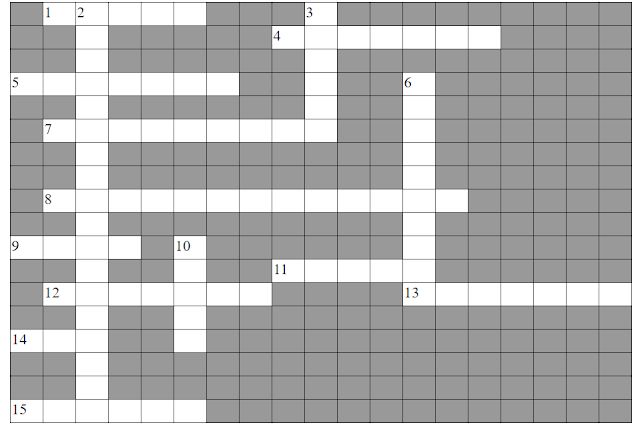Géraldine Servant: "It's a very exciting time to work in Physics"
Last Thursday 28th of March, Géraldine Servant visited our Physics Faculty to give a conference entitled 'From the Higgs to Cosmology'. This conference was one of the many which make up the conference cycle entitled 'If they could, you too', carried out by the Physics Faculty of the University of Valencia and IFIC (CSIC-UV).
Géraldine got her PhD in 2001 from University Paris 11 for theoretical research in high energy physics conducted at CEA Saclay and McGill University in Montreal. After 3 postdoc years at the University of Chicago she returned to CEA Saclay on a permanent position and eventually moved to CERN'S Theory group in 2006, first as a Fellow and then as an ERC grant holder. She has worked on models of new Physics at the TeV scale and their phenomenology at the LHC, with special emphasis for cosmological consequences like the nature of the electroweak phase transition in the early universe and dark matter model building. She joined ICREA at IFAE from 2013 to 2015 and since then is DESY leading scientist and professor at the University of Hamburg.
We had the opportunity to have a brief chat with her.
Who is
Géraldine Servant?
I am a theoretical physicist working at the interface between particle Physics and Cosmology. I'm now based in Hamburg o a joint appointment between University and DESY, which is a german national laboratory, dedicated to fundamental research, in particular in the field of high energy physics. I moved there almost four years ago from Barcelona and before I had spent quite some time at CERN, at Geneva.
If we are right you studied Physics and Maths together?
Yes because, in France, when I went to the university, we
didn't have Maths and Physics separated. The first two years were in common and
after that you specialized in whatever you prefered.
You’ve been
involved in many different projects, but could you please choose the one you
think was the most interesting?
My favourite topic has been the explanation of the matter anti-matter asymmetry of the Universe. I started with this as a PhD student and I'm still on it. It's a really beautiful topic for a student because it puts together a lot of different physics, particle Physics, cosmology, thermal field theory, flavour Physics,... so it's a very rich topic, and there's still much to do.
How is a normal day
at your work?
The nice thing of my work is that there is no routine
[laughs].
Look, I work in a very nice group with young people around me: master students, post-docs, staff members…This is the best and refreshing part. I wish I could spend more time on research; in the few years I have spent more time in faculty meetings, evaluations, reports, administrtation...this kind of things.
Managing my mailbox is also quite challenging!
In a typical day one starts checking the arXiv, newspapers listings... because you are not isolated, we work in a very competitive enviroment, you have to know what the international community is oding, and react accordingly. And I also talk to my collaborators, read articles, do a bit of calculations and attend seminars. We have seminars almost every day. I am also involved in organising some events abroad, such as workshops, ocnferences and summer schools. During the teaching period, time goes also into giving lectures.
Look, I work in a very nice group with young people around me: master students, post-docs, staff members…This is the best and refreshing part. I wish I could spend more time on research; in the few years I have spent more time in faculty meetings, evaluations, reports, administrtation...this kind of things.
Managing my mailbox is also quite challenging!
In a typical day one starts checking the arXiv, newspapers listings... because you are not isolated, we work in a very competitive enviroment, you have to know what the international community is oding, and react accordingly. And I also talk to my collaborators, read articles, do a bit of calculations and attend seminars. We have seminars almost every day. I am also involved in organising some events abroad, such as workshops, ocnferences and summer schools. During the teaching period, time goes also into giving lectures.
You’ve
talked a lot about dark matter, but how would you explain what dark matter is
to someone who doesn’t know much about it?
Dark matter is the matter that we don’t see, and
that means it doesn’t interact with usual matter, with photons. It does not carry electric charge. We have detected its presence only through its gravitational effects. So it's essentially some matter which carries a mass and it has an effect on large scales in the Universe. So far we have not yet been able to identify its nature and it is one of the biggest open questions which have motivated a lot of different types of experiments to hunt for this dark matter to try to detect its non-gravitational interactions.
So we see there’s something around us, we detect its
presence indirectly through its gravitational effects, but we are not able to detect it directly. For instance, we observe rotation curves of galaxies. There is a famous plot which shows the velocity of stars inside a galaxy as a function of the distance from the center of the galaxy and we observe that as you go away from the center of the Galaxy, there is a plateau, while the theoretical predictin if there was only visible matter in the galaxy would be a decreasing function. The plateau can be understood if there is a halo of invisible "dark" matter in the galaxy.
So this is a clear piece of evidence which is back from the 1930s: other independent pieces of evidence have accumulated over the years and it's now absolutely clear there is some invisibe mass in the Universe.
So this is a clear piece of evidence which is back from the 1930s: other independent pieces of evidence have accumulated over the years and it's now absolutely clear there is some invisibe mass in the Universe.
You said that your
main field is the matter-antimatter problem so, nowadays, is there any clue to
solve this problem?
We have plenty of models. As a theorist, the dark matter or the matter-antimatter asymmetry of the universe are actually quite easy to solve. The difficulty is to test which of these models is correct. So we have plenty of different mechanisms to explain these puzzles, but we have to show with observations and experiments which one Nature has chosen.
And is there any
model which seems better tan others?
Yeah, those puzzles can be nicely explained by some new physics near the TeV scale, related to Higgs physics.
This is ideal because this is testable at present experimental facilities such as the Large Hadron Collider. At the moment, there is still a lot to do before we have a clear picture. There are still a lot of exotic options which remain allow by experimental data. One should make the most of the data at hand, and that is what is of interest to me to exploit as much as we can to clean up our ensemble of theories.
Explanations related to Higgs physics are testable and remain my favourite given that we are still puzzled by the origin of the Higgs. Other potential explanations are much more difficult to test.
This is ideal because this is testable at present experimental facilities such as the Large Hadron Collider. At the moment, there is still a lot to do before we have a clear picture. There are still a lot of exotic options which remain allow by experimental data. One should make the most of the data at hand, and that is what is of interest to me to exploit as much as we can to clean up our ensemble of theories.
Explanations related to Higgs physics are testable and remain my favourite given that we are still puzzled by the origin of the Higgs. Other potential explanations are much more difficult to test.
What do you feel when
you discover something that could change the way we understand the Universe
nowadays?
Obviously you feel good [laughs].
It’s exciting. But well, this doesn’t happen alone, it comes in steps, there are many contradictory discussions in the process.
But when you realize something interesting: yes, you get really excited and it's something you share immediately with other people. Note that in theoretical physics, it is mainly about getting thrilled by new ideas and by formulating new questions.
It’s exciting. But well, this doesn’t happen alone, it comes in steps, there are many contradictory discussions in the process.
But when you realize something interesting: yes, you get really excited and it's something you share immediately with other people. Note that in theoretical physics, it is mainly about getting thrilled by new ideas and by formulating new questions.
During the
conference you mentioned the DESY Summer Students programme, could you explain
a little bit more about it please?
Yes, sure. It takes place every summer there in DESY (Hamburg or Zeuthen site), Germany, and it is for bachelor os first-year master Physics students. It is an 8-week programme. Candidates are offered lectures in the morning and they join the day-to-day work of research groups every afternoon at the DESY Laboratories. They also get to meet students from all around the world. The application opens in December and the deadline is end of January. But it is very selective, we take a hundred students out of a thousand of applications.
[For more information visit: https://summerstudents.desy.de/]
How do you see
yourself in a few years? Would you like to continue investigating or focusing
on teaching?
Well, no, I think I want to continue for the next years doing
the same because it still offers me questions and I enjoy it a lot.
What would you say to
a young Physics student?
I would say that you are very lucky because it’s a very
exciting time to work in Physics, there’s a lot to do and it is a beautiful job to test the fundamental laws of Nature.
Do you preffer Spanish potatoe ommelet with or without onion?
Well I would say that I preffer it with spinach, yeah [laughs] I
preffer the spinach and calabacin one.




Comentarios
Publicar un comentario